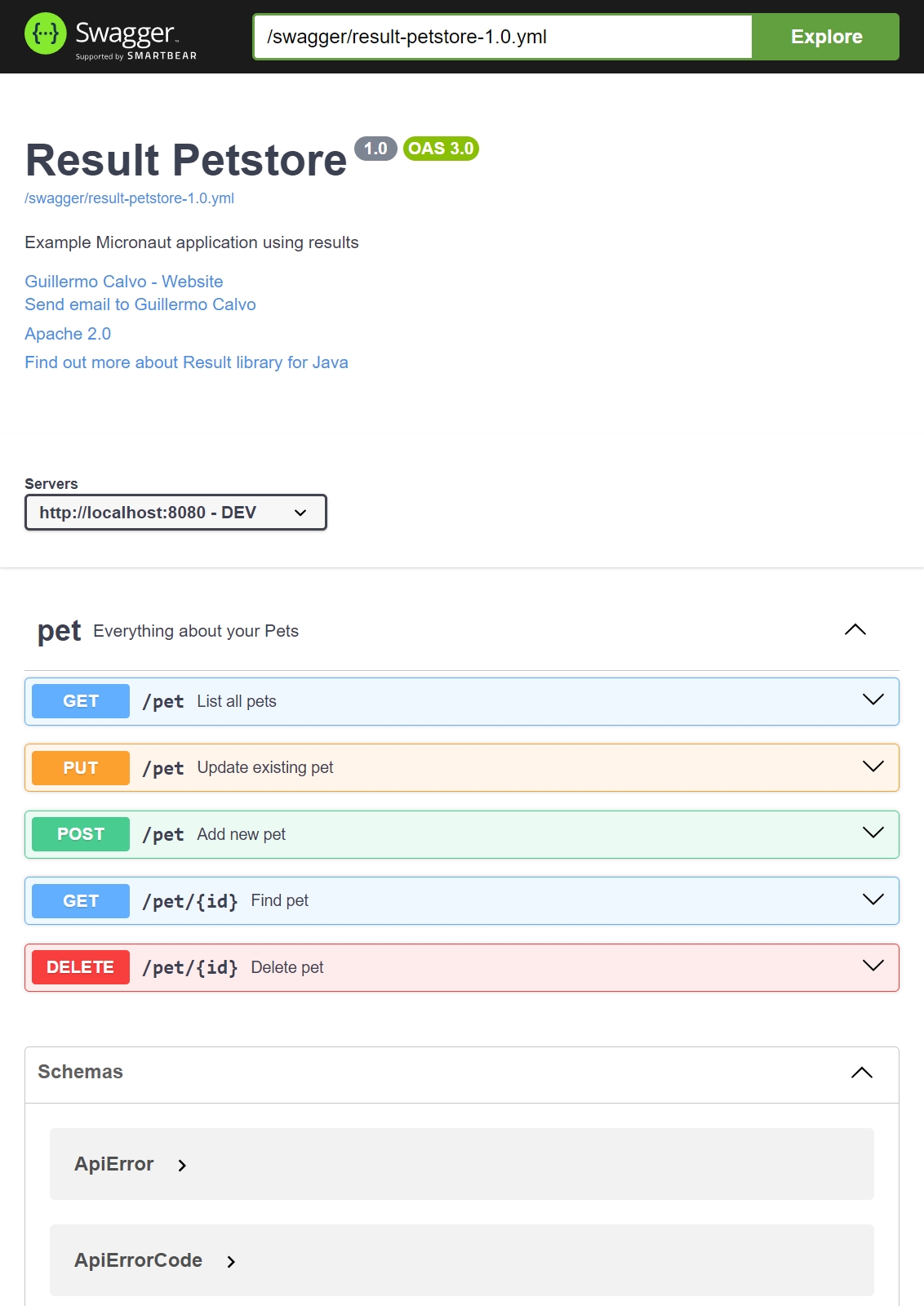Micronaut Demo Project
Take a look at a Micronaut-based REST API leveraging Result objects
This demo project demonstrates how to handle and serialize Result objects within a Micronaut application. It provides a working example of a "pet store" web service that exposes a REST API for managing pets.
Generating the Project
The project was generated via Micronaut Launch including features: annotation-api, http-client, openapi, serialization-jackson, swagger-ui, toml, and validation.
Adding Serialization Support
Then Micronaut Serialization for Result objects was manually added as a dependency to serialize and deserialize Result objects.
dependencies {
// ...
implementation(platform("com.leakyabstractions:result-bom:1.0.0.0"))
implementation("com.leakyabstractions:result")
implementation("com.leakyabstractions:result-micronaut-serde")
}That's all we need to do to make Micronaut treat results as Serdeable.
API Responses
API responses contain a Result field, encapsulating the outcome of the requested operation.
@Serdeable
public class ApiResponse<S> {
@JsonProperty String version;
@JsonProperty Instant generatedOn;
@JsonProperty Result<S, ApiError> result;
}Results have different success types, depending on the specific endpoint. Failures will be encapsulated as instances of ApiError.
Controllers
Controllers return instances of ApiResponse that will be serialized to JSON by Micronaut:
Since failures are expressed as ApiError objects, endpoints invariably return HTTP status 200.
Running the Application
The application can be built and run with Gradle.
This will start a stand-alone server on port 8080.
Testing the Server
Once started, you can interact with the API.
You should see a JSON response like this:
Using Swagger-UI
You can navigate to http://localhost:8080/ to inspect the API using an interactive UI.

The full source code for the example application is available on GitHub.
Last updated
Was this helpful?